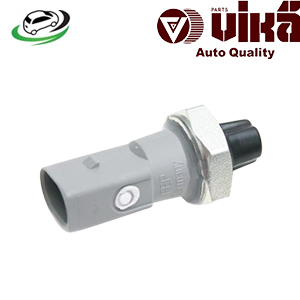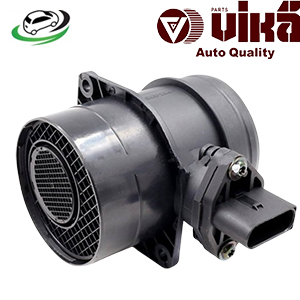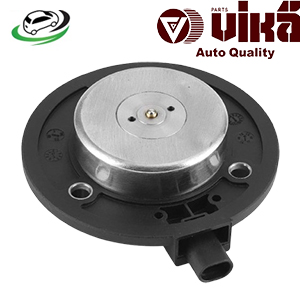-7%
Get AUDI 8V S3/ A3 8P/ B8 A4/ B9 A4/ C7 A6/ MK3 TT / VW CC/ EOS/ Golf V/ Jetta V/ Passat B6/ Tiguan 1/2 Camshaft Adjuster Magnet 06L109259A
The camshaft adjuster magnet is a small but essential part of modern internal combustion engines, especially in vehicles equipped with variable valve timing (VVT) systems. Variable valve timing improves engine performance, efficiency, and emissions by dynamically adjusting the camshaft position to optimize airflow into the engine. The camshaft adjuster magnet controls the movement of the camshaft adjuster, ensuring precise timing changes based on engine load and speed. Understanding the function, benefits, and maintenance of the camshaft adjuster magnet is crucial for ensuring optimal engine performance.
In this guide, we’ll delve into the workings of the camshaft adjuster magnet, its role in engine operation, its benefits, and the steps needed to maintain and troubleshoot this critical component.
1. What is a Camshaft Adjuster Magnet?
A camshaft adjuster magnet, also known as a camshaft solenoid or actuator magnet, is an electromagnet used to control the position of the camshaft adjuster in variable valve timing (VVT) systems. This component is responsible for adjusting the timing of the intake or exhaust camshafts, improving engine efficiency by altering valve timing as engine conditions change.
The camshaft adjuster magnet works in conjunction with a hydraulic camshaft actuator and the vehicle’s engine control unit (ECU). It directs oil pressure to the camshaft actuator, altering its position relative to the camshaft. By doing this, it adjusts the camshaft’s position to advance or retard the opening and closing of the engine’s valves, depending on the engine’s needs at any given moment.
2. How Does a Camshaft Adjuster Magnet Work?
To fully understand how the camshaft adjuster magnet works, it’s essential to first understand the concept of variable valve timing (VVT). VVT systems allow for the adjustment of the timing of the intake and exhaust valves. This helps improve performance at high speeds and fuel efficiency at lower speeds, giving the engine the best of both worlds. The camshaft adjuster magnet is the key component that facilitates this adjustment.
a. Electromagnetic Control
When the vehicle’s engine control unit (ECU) determines that a change in valve timing is necessary (based on factors like speed, load, and throttle position), it sends an electrical signal to the camshaft adjuster magnet. The magnet creates a magnetic field that activates the hydraulic valve inside the camshaft adjuster.
b. Adjusting Oil Flow
Once activated, the adjuster magnet controls the flow of pressurized engine oil to the camshaft actuator, which is mounted on the camshaft itself. By regulating the oil pressure, the adjuster changes the phase angle of the camshaft relative to the crankshaft, thereby advancing or retarding valve timing.
c. Adjusting Valve Timing
By altering the camshaft’s position, the camshaft adjuster magnet changes when the intake and exhaust valves open and close. This adjustment allows the engine to:
- Increase torque at lower RPMs by closing the intake valves earlier.
- Enhance high-speed performance by keeping the intake valves open longer.
- Reduce emissions by optimizing the combustion process.
3. Importance of Camshaft Adjuster Magnets
Camshaft adjuster magnets play a vital role in the overall performance of an engine. With variable valve timing, engines can achieve higher fuel efficiency and better power output without sacrificing reliability. Here are some key reasons why this component is important:
a. Improved Performance
By dynamically adjusting the timing of the intake and exhaust valves, the engine can operate more efficiently at all speeds. This provides better low-end torque and increased power at higher RPMs.
b. Fuel Efficiency
The camshaft adjuster magnet helps optimize the air-fuel mixture entering the combustion chamber, allowing for more efficient fuel combustion. This leads to better fuel economy, especially during cruising or low-load driving conditions.
c. Reduced Emissions
By controlling the timing of the intake and exhaust valves, camshaft adjuster magnets help improve the combustion process, which reduces harmful emissions. This allows engines to meet increasingly strict emission regulations.
4. Symptoms of a Faulty Camshaft Adjuster Magnet
Like any other component, camshaft adjuster magnets can wear out or become damaged over time. A failing or faulty magnet can lead to poor engine performance and other issues. Here are some common symptoms of a malfunctioning camshaft adjuster magnet:
a. Check Engine Light (CEL)
One of the most common signs of a failing camshaft adjuster magnet is the illumination of the check engine light. The vehicle’s ECU may detect a fault in the VVT system, triggering the CEL. Diagnostic trouble codes (DTCs) related to camshaft position or VVT solenoid issues may appear during a scan.
b. Rough Idle
When the camshaft adjuster magnet fails, it can cause the camshaft timing to become erratic, leading to poor idle quality. The engine may run rough, stumble, or even stall while idling.
c. Poor Acceleration
A malfunctioning camshaft adjuster magnet can cause the engine to struggle during acceleration. Since the camshaft timing isn’t being adjusted correctly, the engine may experience a noticeable loss of power, especially at higher RPMs.
d. Increased Fuel Consumption
If the camshaft adjuster magnet isn’t functioning properly, the engine may not be able to optimize fuel consumption, leading to a decrease in fuel economy.
e. Engine Misfires
A faulty adjuster magnet can cause improper valve timing, which may result in engine misfires. This is often noticeable when the engine is under load or during heavy acceleration.
5. Benefits of the Camshaft Adjuster Magnet
The camshaft adjuster magnet provides several benefits to modern engines, making it a critical component in improving performance and efficiency. Here are the primary advantages:
a. Enhanced Engine Performance
The camshaft adjuster magnet improves engine response and power delivery across different RPM ranges. It allows the engine to adapt to varying driving conditions by adjusting the timing of the intake and exhaust valves for optimal performance.
b. Better Fuel Efficiency
By optimizing the air-fuel mixture and combustion process, the camshaft adjuster magnet contributes to improved fuel efficiency. This results in fewer trips to the fuel pump and reduced operating costs.
c. Lower Emissions
The precise control of valve timing reduces the amount of unburned fuel in the exhaust, helping lower harmful emissions. This makes the vehicle more environmentally friendly and helps it comply with emission regulations.
d. Smoother Engine Operation
The camshaft adjuster magnet ensures smooth transitions between different valve timing settings, resulting in a quieter, more refined driving experience.
6. Maintenance of Camshaft Adjuster Magnets
Proper maintenance of the camshaft adjuster magnet can help extend its lifespan and ensure optimal engine performance. Here are some tips for maintaining this component:
a. Regular Oil Changes
Since the camshaft adjuster magnet relies on engine oil to control the camshaft adjuster, clean oil is critical for its proper functioning. Regular oil changes ensure that the adjuster magnet receives sufficient lubrication and that contaminants in the oil don’t cause it to malfunction.
b. Use the Correct Oil
Using the right type and viscosity of engine oil is essential for the camshaft adjuster magnet. Check your vehicle’s manual for the recommended oil specifications, as using the wrong oil can lead to improper VVT operation.
c. Inspect Electrical Connections
Periodically inspect the wiring and connectors leading to the camshaft adjuster magnet. Loose or corroded connections can cause erratic operation or signal failure, leading to poor engine performance.
d. Monitor Engine Performance
If you notice any symptoms of a faulty camshaft adjuster magnet, such as a check engine light, rough idle, or poor acceleration, it’s essential to diagnose and repair the issue promptly. Ignoring these signs can lead to further engine damage.
e. Clean or Replace If Necessary
In some cases, the camshaft adjuster magnet can become clogged with oil sludge or debris, affecting its performance. Cleaning or replacing the magnet may be necessary to restore proper VVT function.
7. Troubleshooting Common Camshaft Adjuster Magnet Issues
a. Erratic Valve Timing
If the engine’s valve timing becomes erratic, it may indicate a problem with the camshaft adjuster magnet. Check the electrical connections and ensure the magnet is receiving the proper voltage.
b. Low Oil Pressure
Low oil pressure can affect the operation of the camshaft adjuster magnet. Ensure the engine has sufficient oil and that the oil pump is functioning correctly.
c. Oil Contamination
Contaminated oil can block the passageways in the camshaft adjuster, preventing the magnet from functioning properly. Perform an oil change if you suspect contamination is causing the issue.
Conclusion
The camshaft adjuster magnet is a key player in modern engines equipped with variable valve timing (VVT) systems. By adjusting the camshaft position to optimize engine performance, fuel efficiency, and emissions, this small yet critical component ensures smooth engine operation. Regular maintenance, including timely oil changes and inspection of electrical connections, will help extend the life of the camshaft adjuster magnet and keep your engine running at peak performance. Understanding its function and troubleshooting common issues can help prevent engine damage and keep repair costs to a minimum.
Follow us on Facebook for more parts.




Reviews
Clear filtersThere are no reviews yet.